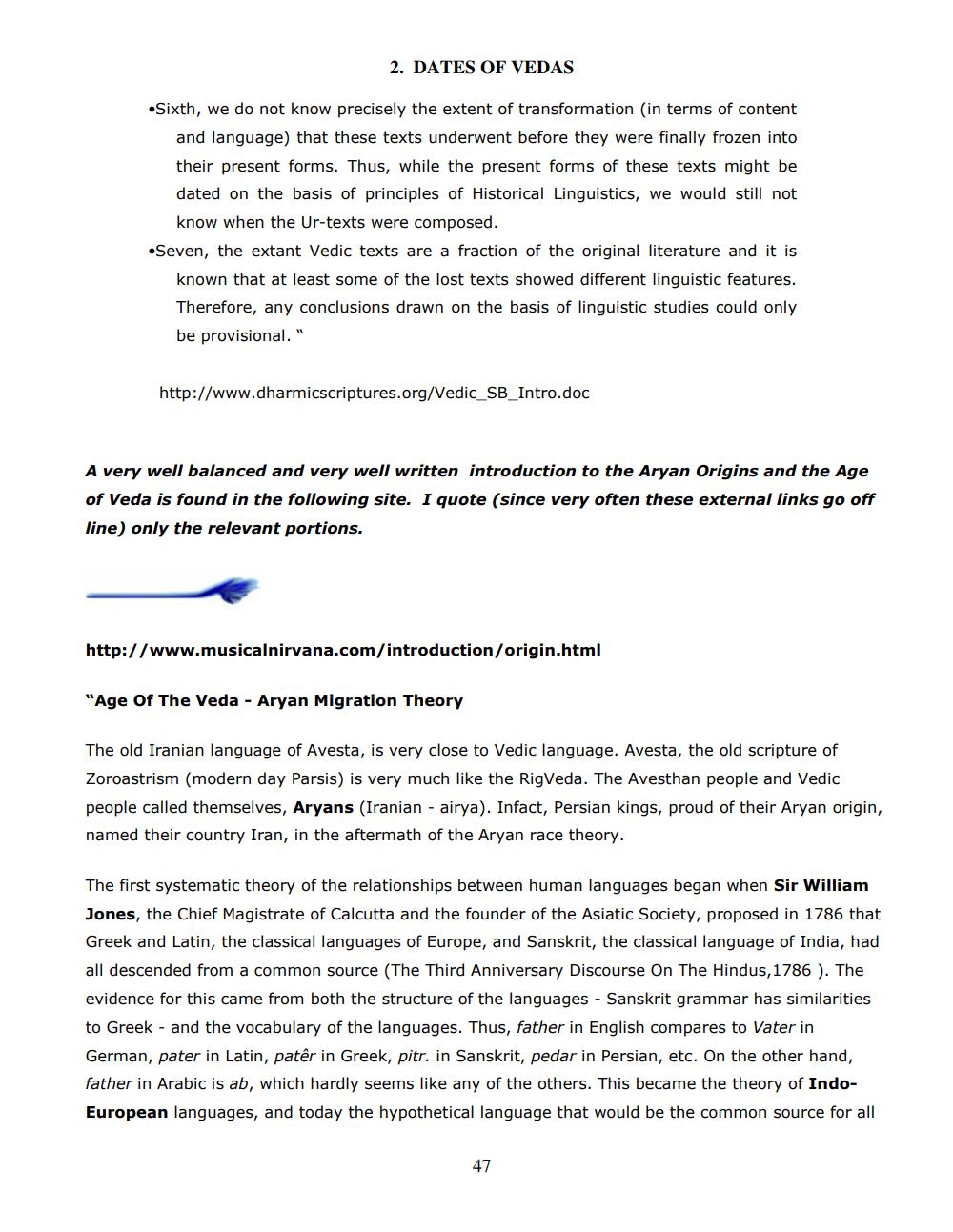________________
2. DATES OF VEDAS
•Sixth, we do not know precisely the extent of transformation in terms of content
and language) that these texts underwent before they were finally frozen into their present forms. Thus, while the present forms of these texts might be dated on the basis of principles of Historical Linguistics, we would still not
know when the Ur-texts were composed. •Seven, the extant Vedic texts are a fraction of the original literature and it is
known that at least some of the lost texts showed different linguistic features. Therefore, any conclusions drawn on the basis of linguistic studies could only be provisional."
http://www.dharmicscriptures.org/Vedic_SB_Intro.doc
A very well balanced and very well written introduction to the Aryan Origins and the Age of Veda is found in the following site. I quote (since very often these external links go off line) only the relevant portions.
http://www.musicalnirvana.com/introduction/origin.html
"Age Of The Veda - Aryan Migration Theory
The old Iranian language of Avesta, is very close to Vedic language. Avesta, the old scripture of Zoroastrism (modern day Parsis) is very much like the Rigveda. The Avesthan people and Vedic people called themselves, Aryans (Iranian - airya). Infact, Persian kings, proud of their Aryan origin, named their country Iran, in the aftermath of the Aryan race theory.
The first systematic theory of the relationships between human languages began when Sir William Jones, the Chief Magistrate of Calcutta and the founder of the Asiatic Society, proposed in 1786 that Greek and Latin, the classical languages of Europe, and Sanskrit, the classical language of India, had all descended from a common source (The Third Anniversary Discourse On The Hindus, 1786 ). The evidence for this came from both the structure of the languages - Sanskrit grammar has similarities to Greek - and the vocabulary of the languages. Thus, father in English compares to Vater in German, pater in Latin, patêr in Greek, pitr. in Sanskrit, pedar in Persian, etc. On the other hand, father in Arabic is ab, which hardly seems like any of the others. This became the theory of IndoEuropean languages, and today the hypothetical language that would be the common source for all
47




